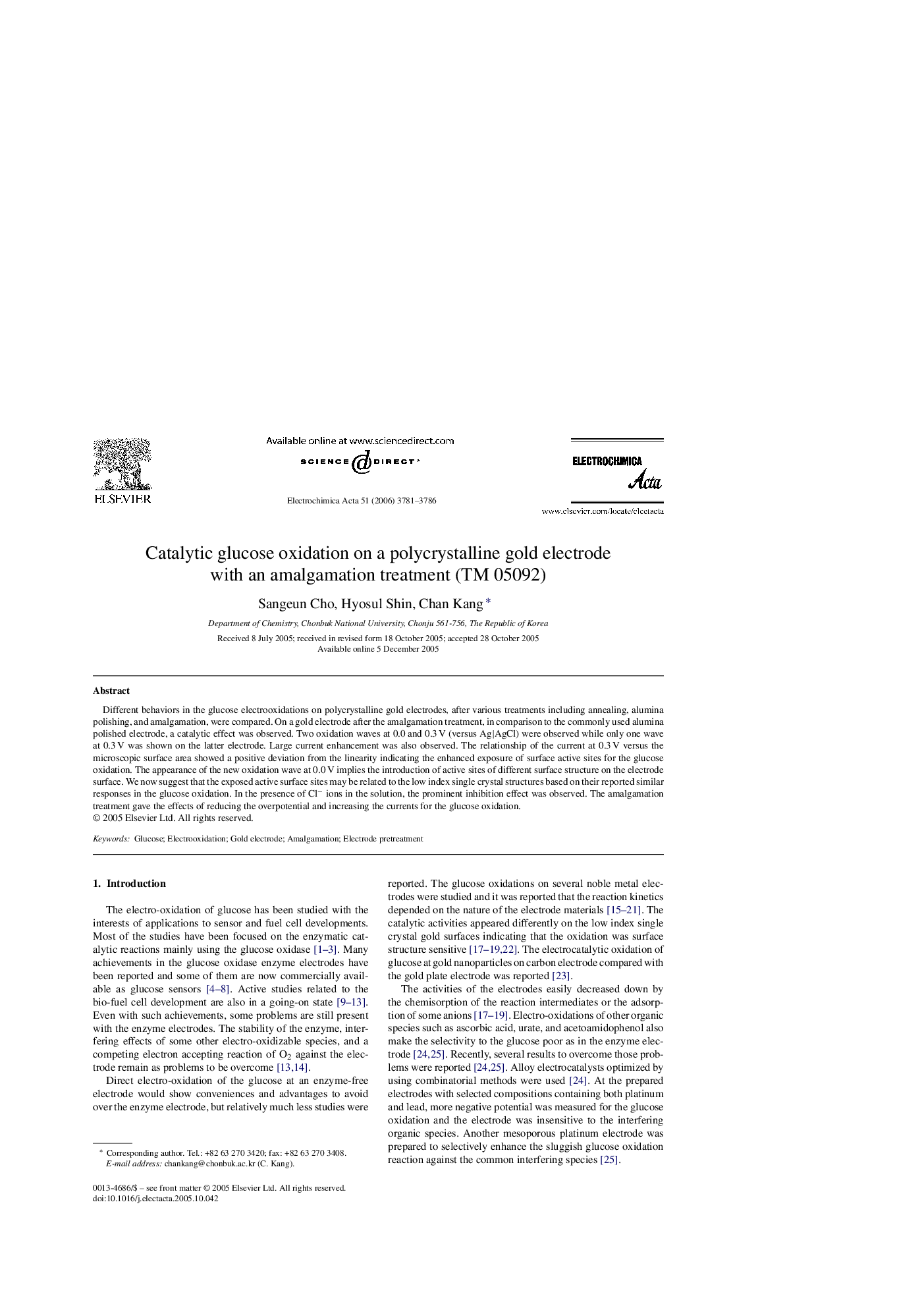| Article ID | Journal | Published Year | Pages | File Type |
|---|---|---|---|---|
| 195862 | Electrochimica Acta | 2006 | 6 Pages |
Different behaviors in the glucose electrooxidations on polycrystalline gold electrodes, after various treatments including annealing, alumina polishing, and amalgamation, were compared. On a gold electrode after the amalgamation treatment, in comparison to the commonly used alumina polished electrode, a catalytic effect was observed. Two oxidation waves at 0.0 and 0.3 V (versus Ag|AgCl) were observed while only one wave at 0.3 V was shown on the latter electrode. Large current enhancement was also observed. The relationship of the current at 0.3 V versus the microscopic surface area showed a positive deviation from the linearity indicating the enhanced exposure of surface active sites for the glucose oxidation. The appearance of the new oxidation wave at 0.0 V implies the introduction of active sites of different surface structure on the electrode surface. We now suggest that the exposed active surface sites may be related to the low index single crystal structures based on their reported similar responses in the glucose oxidation. In the presence of Cl− ions in the solution, the prominent inhibition effect was observed. The amalgamation treatment gave the effects of reducing the overpotential and increasing the currents for the glucose oxidation.
